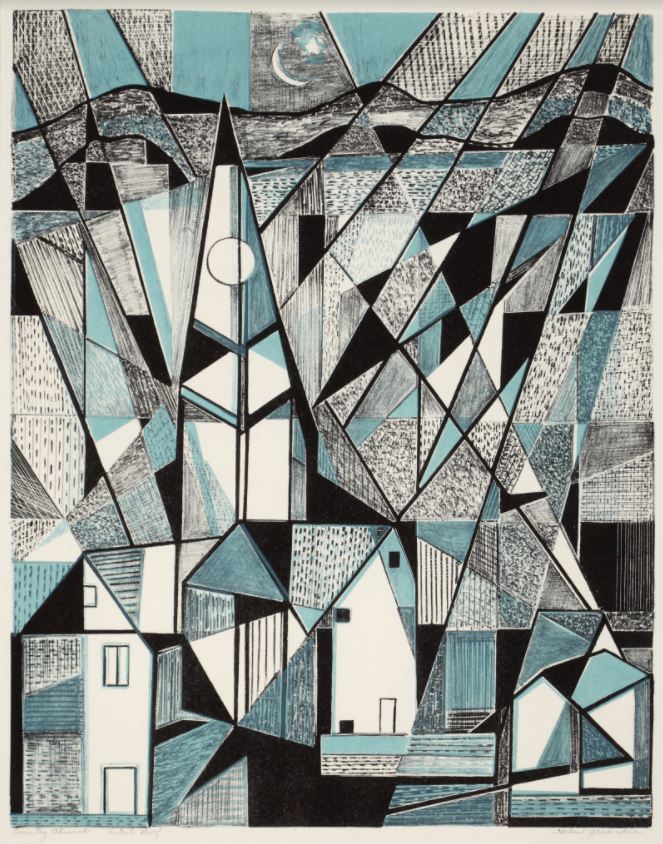Helen Gerardia, American, born in Russia, 1903–1988, Country Church, 1956, Lithograph, Artist’s Proof, 13 7/8 x 17 3/4 in., Saint Vincent College Collection, Gift of Samuel Sumner Goldberg.
Having immigrated from Ekaterinoslav, Russia (now Dnipro, Ukraine) to the United States as a child, Helen Gerardia initially pursued a career as a first grade teacher in the New York public school system. She began her formal art training in 1947 at the Art Students League of New York and later, the Brooklyn Museum. While studying under the celebrated abstractionist, Hans Hoffman, Gerardia developed her prismatic technique of fragmenting recognizable objects using active lines and contrasting colors. Saint Vincent was first introduced to Gerardia’s work in September 1958 when the College hosted a traveling two-person exhibition of lithographs, paintings, and drawings created on behalf of Gerardia
and Eliza Erlanger. Over the course of her four-decade career, Gerardia’s hard-edged abstractions have been exhibited in all fifty states and over a dozen countries.
Gerardia’s nocturne of a rural church represents an edifice inherited from an earlier time yet rendered with the vigor of the modern age. An angular steeple thrusts skyward, paired against a mountainous terrain in the distance just beneath a crescent moon and a single star. Below, the architectural structures that ground the composition are shown from multiple angles simultaneously–an artistic convention associated with early Cubism. Shading and patterning the irregular shapes formed by converging lines, the artist employed her signature counterchange method. Dynamic in both form and content, Gerardia’s fractured landscape conjures the tensions and excitement inherent within the mergings of tradition and modernity.
and Eliza Erlanger. Over the course of her four-decade career, Gerardia’s hard-edged abstractions have been exhibited in all fifty states and over a dozen countries.
Gerardia’s nocturne of a rural church represents an edifice inherited from an earlier time yet rendered with the vigor of the modern age. An angular steeple thrusts skyward, paired against a mountainous terrain in the distance just beneath a crescent moon and a single star. Below, the architectural structures that ground the composition are shown from multiple angles simultaneously–an artistic convention associated with early Cubism. Shading and patterning the irregular shapes formed by converging lines, the artist employed her signature counterchange method. Dynamic in both form and content, Gerardia’s fractured landscape conjures the tensions and excitement inherent within the mergings of tradition and modernity.

